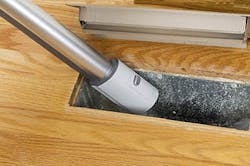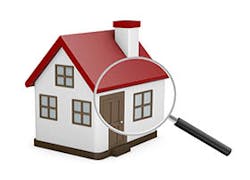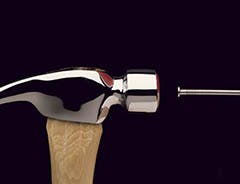It's Time To BEAT Low-Bidders on Residential HVAC Replacement Sales
How do you respond when prospective customers say, "I've got three other bids on the exact same equipment you're quoting me on, and you're $2,000 higher than everyone else?"
Differentiate Between Price and Cost
Ask the customer, "Is it the price you're concerned about or the cost?" They'll usually ask, in so many words, "Aren't they the same thing?" Explain to them, "The price is your initial investment; what you pay for the installation. That's what most people focus on.
"The cost is your overall cost of ownership. That includes such things as the ongoing maintenance, your utility bills to operate it, repairs, and its eventual replacement. Over the lifetime of the equipment, your cost of ownership will far outweigh the initial price you paid for it.
"I do everything in my power to keep your overall cost of ownership to a minimum. Would you like to know what I do, why I do it, how much it adds to the cost of the job, and how it saves you money?"
Quantifying Quality
Can we agree that anyone whose price is $2,000 less than yours, for the same make and model, cannot possibly doing a first-rate installation? They're obviously not doing the best installation possible. Furthermore, they've got to be cutting corners somewhere.
Provide a close list that shows actual physical things you include in installations, and assign a reasonable dollar amount to each of them, thereby "quantifying" your quality. Give customers the option of declining on some or all of them and you could say that you're turning the tables on your customers and letting them decide if they want a cut-rate installation, or something worth owning.
Here's an abbreviated list of what's covered in this close.
-
Permit: Anyone doing this same job for $2,000 less isn't pulling a permit for this job. Permits are for the customer's protection. The job is inspected by a non-biased third-party and the inspector will not sign off on the permit until you're satisfied.
Aditionally, it's illegal to do an installation without one. If someone is breaking the law to do this installation for you, how can you be assured that everything they're doing is legal?
The permit adds $300 to the price, and is about the only thing that can't be taken out of the job.
-
Replace the plenums: The existing plenums are usually in bad shape and won't last the lifetime of the equipment, and properly fit it. The standard procedure is to re-use existing plenums and ‘adapt' them to fit the customer's new equipment. Tell the customer, "I could do the same thing my lower-priced competitors are doing and lower your price by $250, but why attach high-efficiency equipment to potentially leaky plenums?"
- Mastic seal. "Even well-made and well-sealed duct systems leak. Most duct systems lose a good 30% of their efficiency through duct leakage, so I mastic-seal every joint I touch."
(Note: I recommend every contractor invest in diagnostic equipment to locate all duct leakage and make sealing ducts a standard part of every installation. Many people who have been willing to pay my significantly higher price to install the exact same equipment as my lower-priced competitor have told me that the duct sealing was the reason they chose me.)
"I could pretend that silver tape is more than adequate, and you could spend $200 less on this installation (That price is for properly sealing only those joints that are a part of the installation. Complete duct sealing can run ten times that amount, and be well worth the investment). But it wouldn't be true and it wouldn't be the right thing to do. So why would I ask you to invest this much money in high-efficiency equipment, and leave the ducts leaking, just to save $200 on the initial installation?"
Three more services on your checklist
"Your equipment has been distributing contaminants throughout the home via the duct system for quite some time, so I do a duct sanitizing procedure when I do a new installation. It's only $175. I could leave it out, but why replace your equipment, replace your plenums, install a system sterilizer, and a high quality, high-capacity air cleaner, then leave your ducts dirty?"
Replace the pad. "The pad your outdoor unit sits on is fine for the time being. The problem is, the useful life of your new system is 16 years, and I know your existing pad won't last that long. I could ignore that fact and save you about $200 on your installation. That sounds attractive at first glance, but I know that, at some point over the next 16 years or so, I'll be out to uninstall your outdoor unit, lay the pad down properly, then re-install your unit – all for a significantly larger amount of money than $200.
"The pad itself doesn't cost $200. I take all the steps necessary and vital to ensure the pad stays in place and remains level. First I dig a few inches into the ground. Then, I pour some fine sand into the hole. I follow that with a layer of pea gravel. After I tamp that down, I add more fine sand and tamp it down firmly. All of that takes time and is well worth the effort.
"I could do what my lower-priced competitor is doing and use you old pad and lower your price $200, but why short change yourself?"
Surge protection. "The warranty doesn't cover failures of your compressor, motors, circuit boards, or all the other expensive electronic items on both the inside and the outside units of your new system, when they're caused by power surges. So, for only $200, I install surge protection to protect your investment. If you like, I can lower your price $200 by eliminating them and leave you vulnerable to those potential expenses down the road."
"Furnaces and air conditioners generate heat and cool themselves by drawing air through themselves. This means they act like vacuum cleaners for anything that's in the air. The manufacturers design them with the intention that they be absolutely spotless, otherwise they'll overheat, which causes component failure and shortens their lifespan.
"With this in mind, I come back out in six months to check it over, tighten anything that's loosened, perform routine cleaning, and make certain it's still operating per the manufacturer's specs. If anything is wrong, I fix it, at no charge to you. I do the same thing six months later. That way we both know that at the end of 12 months it's working properly and is still almost in like-new condition."I could remove this from my quote and just wait for things to break. It would actually lower your initial investment by $200. But why wouldn't you want to maintain something you're spending this kind of money on?
"After the first year, I even give you a discount the keep having me come out to inspect and maintain your equipment."
Also must include in a quality installation
Outdoor disconnect. "There's nothing wrong with your existing outside disconnect switch and wiring to the unit at this time. I could re-use what's already there, however, I know your existing outside disconnect switch and wiring to the unit won't last 16 years. That means I also know I'll be back at some point to replace it, at great inconvenience to you, and for a significantly higher cost. By replacing it now, I'm saving you hundreds of dollars.
"Would you like for me to copy my lower-priced competitor and use your old disconnect and lower your initial investment by $60 in order to compete on price?"
"To prevent this, I either set it on vibration isolation pads or install legs on it to keep it off the pad and drain properly, thereby preventing rust and helping the unit to last and look good as long as possible. "
(Note: Contractors can often get the same weather legs used on heat pumps as a separate item and install them air conditioners as well. They look sharp, customers love them, and you'll be the only contractor in town that does this for them.)
"When anything is set directly on concrete, it draws moisture into it. When basements flood, or there is a drain stoppage, the furnace can be permanently damaged. I don't set the outdoor unit directly on the pad, nor do I set the indoor unit directly on the concrete floor of your basement.
"It takes a little extra time and a small investment in materials to elevate your equipment. It probably adds about $100 to the job, but this small step has the potential to save you thousands of dollars.
"Would you like me to skip this step and knock $100 off your price so I can be competitive?""They have clean criminal backgrounds and are drug-tested prior to hiring and at random intervals. You know your possessions are safe with my installers around. They're covered under my license and insurance and have had my technical training, quality control training, and customer service training.
"I could lower your initial investment by a minimum of $400 if you were okay with me bringing in subcontractors or trainees, who may or may not know what they're doing. But why compromise on the installers and get an inferior installation to save $400 when you're already spending this kind of money?"Quality control inspection. "Despite the fact that my installers are perfectionists who know their work will be inspected, everyone overlooks things from time to time, and everyone makes mistakes.
"After the installation is complete and the installers have left, I'll send out my quality control inspector. The quality control inspector's job is to complete a second final checklist, which we compare to my lead installer's.My inspector looks to find something wrong, or something that could be improved, on every job. This is your assurance that you are getting the highest quality installation possible.
"It costs about $100 for this additional person to do a final inspection. We could pretend that my installers are perfect and never make a mistake or get in a hurry, but why would we want to short change your installation when you're already spending this kind of money?"
Additional Possibilities
I feel that the above-mentioned procedures should be considered part of the minimum standards for a high quality installation that your company does. Depending on the construction in your area, and your personal preferences, there are a number of other things you could incorporate as well:
- Hanging cradle for horizontal attic installations
- Plenum dampers or zoning
- Spray foam insulation on the outside of ductwork.
The 'Nail Down'
When you add up the cost of the steps that they agreed were necessary and vital to ensure a proper installation, they begin to understand that they're not paying you a premium price for a luxury installation, and that they're not overpaying by buying from you. They may, in fact, be saving thousands of dollars!
Ask the customer, "Is there anything that I've gone over with you on how I do my installations that seems like overkill, or unnecessary in order to ensure that you're getting a proper installation?"
Naturally, they'll say no, it all sounds essential.
Drive it home a little further by saying, "Maybe you don't care whether or not I replace the pad, or the disconnect switch. Maybe you don't want any follow-up service, or a corrosion inhibitor, or surge protection. Maybe you don't see the need to sanitize your ducts or seal them up properly with mastic."
Again, they'll tell you that they want all that.
Don't quit. Continue with, "Maybe you don't care whether or not I send my highly trained, background-checked, and drug-tested installers, who've had my quality control training and my customer service training. Maybe you figure all installers are alike, and if someone says they're qualified to do the job and can do it as well as anyone else, you'll take their word for it."
They'll insist that is not the case.
Ask, "Is there anything on this list that I've gone over with you that you believe is overkill or unnecessary in order to earn the right to your business?"
They'll say no.
Ask, "And you want it done that way?"
Add up the costs and say "Then, you do see where the $2,000 difference in price comes from? Can you see how, if we add that to my lower-priced competitor's quote, it's actually higher than mine?
"Do you want me to do this installation for you?"
Charlie Greer has put this presentation on a single audio CD called, "Quantifying Quality: How to BEAT LOW-BIDDERS. For more info on that product, and all of Charlie Greer's sales training, call 1-800-963-HVAC (4822) or go to www.hvacprofitboosters.com, or call 1-800-963-HVAC (4822). E-mail Charlie at [email protected].





